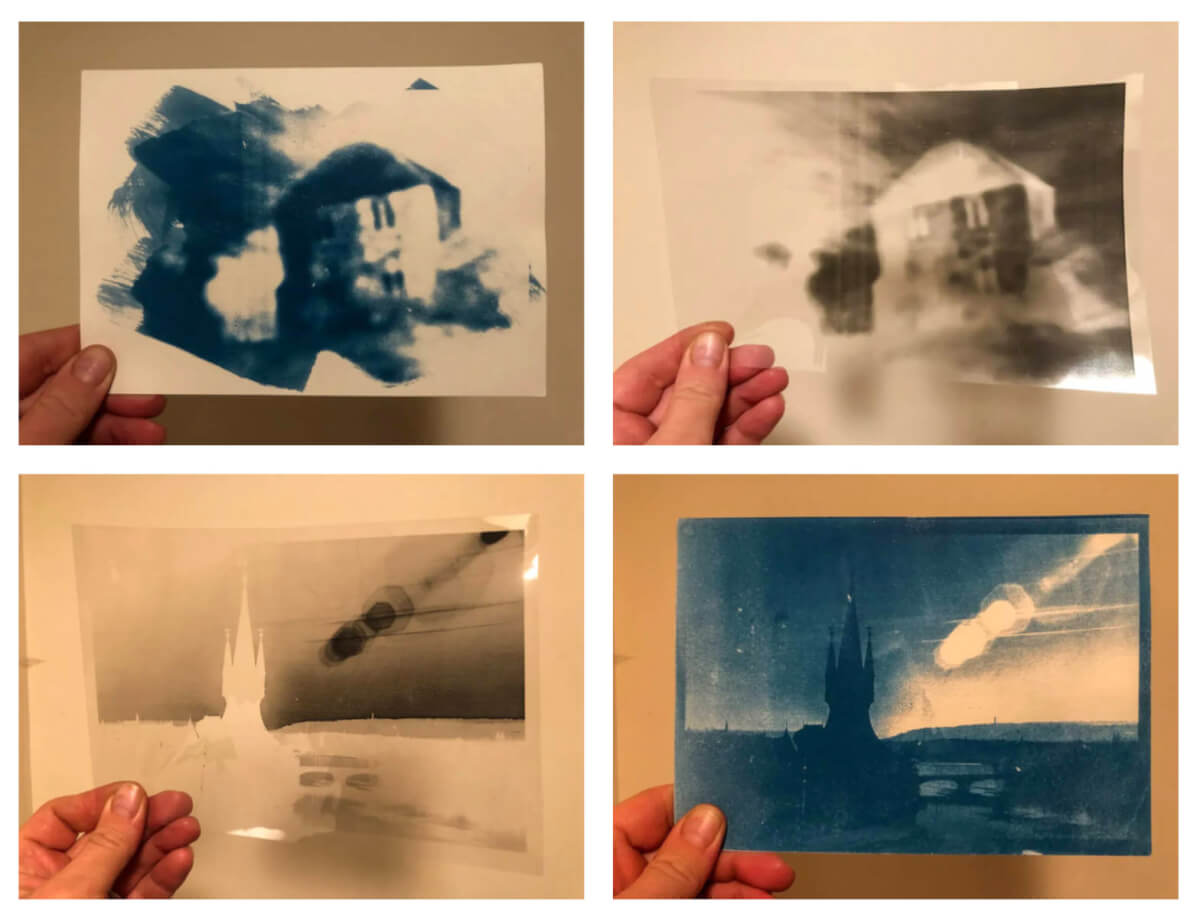I desire to shoot large format. So far, it’s a photographic journey that I’ve not managed to start, unless you count homemade Foamcore pinhole cameras. But I’m getting closer. I will be an LF photographer one day. One day soon. Maybe even a ULF shooter.
But until then, I make LF negatives by printing digital files onto acetate. The acetate negative process is simple:
- Process your digital file and make it monochrome.
- Adjust contrast and the D-Max and D-Min.
- Invert it.
- Print onto acetate.
I have found that contrasty images work best, and any image with a lot of featureless areas, such as sky, may not work so well. You can print onto ‘normal’ paper and wax it, but that’s another story.
To be pernickety, you also need to flip your image over so it’s mirrored before printing. That way when you lay your acetate down – printed side onto your paper – it will be the right way around. That minuscule thickness of the acetate does have an effect on image sharpness.
I like to contact print acetate negatives onto watercolour paper coated with cyanotype chemistry.
I am drawn to historical photo processes, and the simplicity of cyanotypes makes this whole process very easy: that’s “no need for a darkroom” easy.
- This is one of the easiest ways to get a contact print made.
- One of the easiest ways to make an analogue print.
- It’s doable in the home with minimal equipment and no need for a darkroom at all.
Once you have made it through the editing and post processing stage, and have your selection of images printed onto acetate, you are ready to make your cyanotypes.
I will assume you have read your cyanotype kit instructions already, and have your paper coated and cured in preparation. You can work in electric light, pull the curtains and switch the lamp on. Cyanotypes are only sensitive to ultraviolet light (most easily obtained from the Sun) so your home appliances are safe for preparing your exposure.
Other interesting reads
Lay your acetate onto the coated paper and sandwich these two in a picture frame. I use clip frames personally. Once secure, you expose your neg onto the paper by placing it under sunlight. Atmospheric conditions mean that I can’t tell you how long your exposures will need to be, but working on a guesstimate I’d say in direct summer sun, 20 minutes is a good place to start.
So here are my Five Frames…
Remember that density will affect exposure times, so if you’ve got good light to rely on you can even go to the trouble of making contact strips to ensure maximum results. I made contact prints like this for a while, but found myself frustrated with how unreliable the UK’s sun was and how unrepeatable my exposures felt like they were.
So I acquired an ultraviolet light box. This meant I could really churn images out with reliable, repeatable accuracy. A veritable production line. And exposure times below 10 minutes as well. Frequently as ‘quick’ as 3 or 4.
BTW A5 is the UV light box’s maximum area, so I plan on building an A3 version.
A3 acetate cyanotype contact prints would be considered ULF, wouldn’t they? Right?
~ Toby
Submit your 5 Frames… today
Get your own 5 Frames featured by submitting your article using this form or by sending an email via the contact link at the top of the page.
Share your knowledge, story or project
The transfer of knowledge across the film photography community is the heart of EMULSIVE. You can add your support by contributing your thoughts, work, experiences and ideas to inspire the hundreds of thousands of people who read these pages each month. Check out the submission guide here.
If you like what you’re reading you can also help this passion project by heading over to the EMULSIVE Patreon page and contributing as little as a dollar a month. There’s also print and apparel over at Society 6, currently showcasing over two dozen t-shirt designs and over a dozen unique photographs available for purchase.



















One response to “5 Frames… Of acetate negative cyanotypes, with a ‘How-To’ so you can as well”
I really appreciate the topic – alternative process photography is a passion of mine as well!